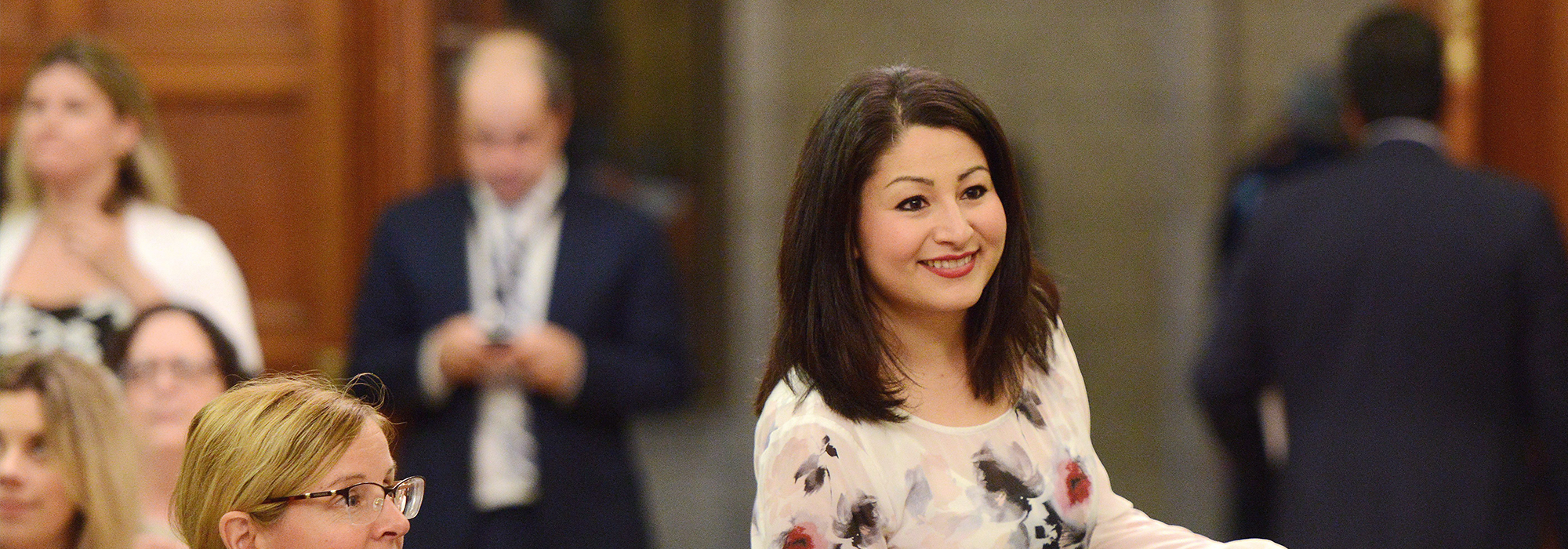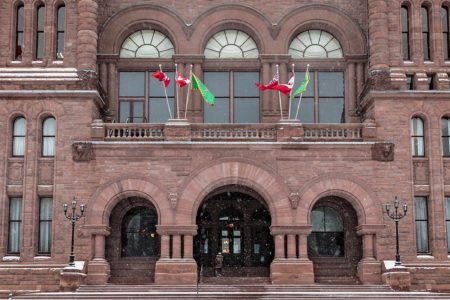
While many Canadians have been sitting on the beach, camping or otherwise enjoying summer, an all-party group of MPs, the Special Committee on Electoral Reform, has been holding hearings on alternatives to the federal electoral system. This is the first step toward meeting the Liberal Party of Canada’s 2015 election commitment that the next election will be the last under the first-past-the-post (FPTP) system.
Although the process has only just begun, questions have been raised about its feasibility and legitimacy. In my assessment, the process the government has outlined is flawed on at least three counts:
- the problem to be rectified is poorly defined;
- the approach to citizen engagement is limited and insufficiently proactive; and
- the timelines are too tight.
Defining the problem
The committee’s terms of reference ask it to identify and study “viable alternate voting systems to replace the first-past-the-post system.” However, the following key questions are not addressed there: What is the problem to be rectified? What are the objectives that would be served by adopting a new electoral system? Put another way, how would Canada’s democratic life be changed — one assumes for the better — by replacing the present voting system?
This flaw would be less significant if these questions had been addressed elsewhere. The 2015 platform of the Liberal Party of Canada has only three short sentences on electoral reform, one of which is the commitment about changing the system in time for the next election. The heading for the brief section is “We will make every vote count.” This catchphrase does not take us very far.
The Minister of Democratic Institutions, Maryam Monsef, has described the existing voting system as “antiquated.” By this, one assumes she means it is no longer suitable for the purpose. If so, why?
In the absence of a defined problem, the committee is nevertheless mandated “to assess the extent to which the options [to be] identified” could advance a series of principles for electoral reform. Five “principles” are presented, but some of them are essentially an amalgam of concepts, some of which (for example, enhanced social cohesion) seem hardly relevant.
Moreover, the list of principles almost entirely skirts the governance implications. Setting aside the alternative vote, which is a preferential majoritarian system, not a proportional one, the options being discussed would almost certainly result in perpetual minority government. This has potential advantages: for example, it might lead to a pattern of coalition governments with a more consensual approach to dealing with key national issues. But there could be downsides. Canada is a highly diverse federation with strong provincial governments and sharp regional differences. Would the potential for federal leadership on important issues, including in times of crisis, be weakened by implementing a proportional voting system? The committee should be considering questions such as these.
Engaging the public
The consultation process has been multi-pronged, including traditional Commons committee hearings. By the end of July, the MPs had heard from 21 witnesses in Ottawa. Most of these were Canadian academics, although they included the chief electoral officers of Canada and New Zealand and a member of the Australian Electoral Commission (the last two by teleconference). Not counting Monsef, only one was a woman.
I was a witness in late July, alongside two Canadian academics. According to the invitation, we were to be part of a panel. Based on this and the scheduled duration of two and a half hours, I assumed there would be an open discussion and exchange of viewpoints with members of Parliament and the other panellists. This was not the case. Following our presentations, we responded to questions (some surely prepared by staff) from the members. My presentation on the representation of diversity under different electoral systems elicited one question. Panellists were discouraged from speaking except in response to questions. Although it was longer and free of partisan barbs between members, the session was hardly richer than a routine hearing on a bill.
The committee resumes its Ottawa hearings on August 22. As in July, the witnesses scheduled to appear at the ensuing five meetings are mostly university academics. Has the committee not reached out to groups interested in the issue, such as Equal Voice? This autumn, the committee plans to hold hearings in 17 other centres (at least one in each province and territory). Anyone who would like to appear before the committee must submit a request by October 7. Time will be set aside at each meeting for public participation (open microphone).
It remains to be seen whether the committee’s rather rigid way of proceeding will allow it to explore the varied perspectives of the experts, community leaders and groups it will hear from as it travels. There is a risk that too little time will be allocated to the open-mic part of the meetings and that it will end up looking like an add-on. This nod to citizen engagement may turn out to be little more than that.
As part of a parallel initiative, the office of the Minister of Democratic Institutions has released a number of materials, including a “guide to hosting a successful dialogue” on electoral reform. The guide includes a fact sheet describing FPTP, majoritarian, proportional and mixed electoral systems; it provides suggested dialogue models and even a sample agenda. MPs have been encouraged to host town halls. They and others who organize dialogues are asked to submit the results to the special committee.
This do-it-yourself approach assumes that a significant number of organizations or individuals will organize an event on a topic that is still a long way from attracting much popular attention.
Although this initiative has merit, there are weaknesses. Rather than providing for direct dialogue with Canadians, this do-it-yourself approach assumes that a significant number of organizations or individuals will organize an event on a topic that is still a long way from attracting much popular attention. The fact sheet is reasonably well done, but it is not sufficient to inform community discussion on matters that can quickly become technical. Moreover, there is the challenge of asking people to look for a remedy to an ill-defined problem.
Tight timelines
The final flaw in the process, perhaps the most significant, is the timelines. The committee must report to Parliament by December 1, 2016. This leaves only three months to complete the hearings, analyze what it heard and what was sent in as part of the broader consultation and then finalize its report.
The Liberal platform states that “within 18 months of forming government, we will introduce legislation to enact electoral reform.” A bill would thus have to be tabled by May 2017.
The Chief Electoral Officer told the committee that up to 26 months would be needed to implement a new electoral system. With the next general election fixed by law for October 21, 2019, the legislation would have to be adopted by August 2017. Parliament almost always recesses by late June. Review of the legislation, which usually includes committee hearings, would therefore have to be completed in as little as two months. This is unrealistic — not least because the Conservatives, who oppose reform, would likely resist expedited approval (which would not be desirable in any case).
This all leads to the conclusion that it is not feasible to have a new electoral system in place for the October 2019 election. It is time to rethink the timetable and, in so doing, correct some of the flaws discussed above.
Toward a richer consultation
The deadline for the committee’s report could be extended by two or three months. This would allow it more time to digest what it hears as it travels across the country, as well as review the observations from the dialogue process. It would also allow it time to consider governance issues, which have so far received little attention. Maryam Monsef could be invited to address this dimension in a final session before the committee.
Rather than recommend a single model for electoral reform, the committee should be encouraged to highlight and explain in its report the two or three options for electoral reform it considers the most feasible.
The government could develop an extensive consultation process centred on the options highlighted in the committee’s report. The process should allow for richer citizen engagement than what will be possible this autumn and, importantly, encourage public education about the potential benefits (and drawbacks) of reform under the different systems.
There is no shortage of consultation models from which to draw. A citizens’ assembly, as held in British Columbia and Ontario a decade ago, would probably be too expensive. An independent commission, the approach used in New Brunswick and Prince Edward Island at about the same time, is an alternative. Such a commission could use a range of consultation techniques, including some that bring together interested citizens for learning and discussion. In this regard, David McLaughlin, who was deputy minister of the New Brunswick Commission on Legislative Democracy, has reminded us of the series of two-day constitutional conferences held in early 1992 before governments began negotiating what became the Charlottetown Accord. Information technology and social media provide opportunities not available then or at the time of the provincial reform exercises.
An additional, richer consultation would mean that the government had modified, not buried, the party’s commitment to changing the electoral system. It would recognize that the issue and timelines are more demanding than may have been realized. More than a decade passed in New Zealand — a less complex country than Canada — between the appointment of a royal commission and the first (1996) election held under the mixed member proportional system.
Planning for the next steps also needs to address the issue of a potential referendum on a new electoral system or systems — which I have argued is desirable on the basis of the principle of democratic consent. The Conservatives insist that any proposed reform be put to a referendum and may issue a dissenting committee report to that effect. Before changing its electoral system, New Zealand held two referendums, the first of which (1992) allowed voters to choose among four potential options. British Columbia, Prince Edward Island and Ontario each held a referendum on the model that emerged from the province’s consultation process.
Experience elsewhere does not provide a precise guide for further consultation on the federal voting system. It can nevertheless inform consideration of the most effective means to engage Canadians more fully on the potential benefits and drawbacks of electoral reform and the most viable options. For such an important issue, a higher benchmark of consultation is entirely warranted.
Photo: Sean Kilpatrick/The Canadian Press
This article is part of the Electoral Reform Special Feature.
Do you have something to say about the article you just read? Be part of the Policy Options discussion, and send in your own submission. Here is a link on how to do it. | Souhaitez-vous réagir à cet article ? Joignez-vous aux débats d’Options politiques et soumettez-nous votre texte en suivant ces directives.






